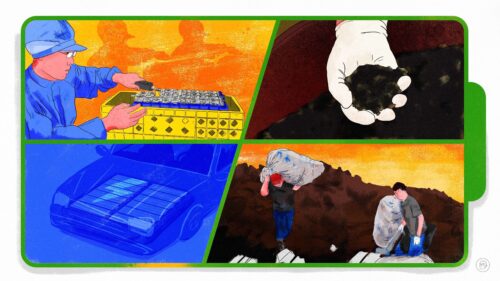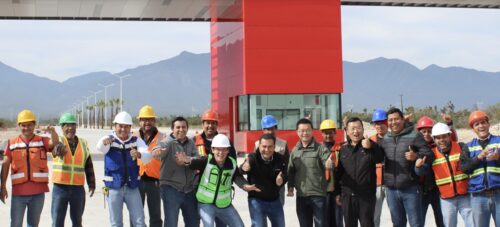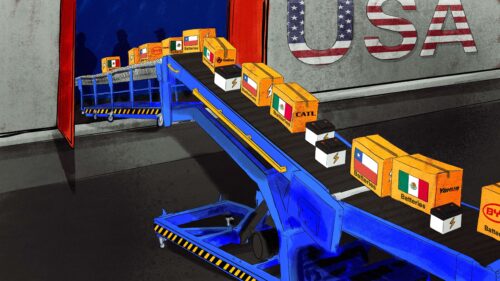Ten takeaways from the first week of Auto Shanghai 2023
China’s biggest auto show is taking place in Shanghai. Here are some of the major developments so far at this year’s event, from new luxury electric vehicles and condensed batteries to flashy concept cars.
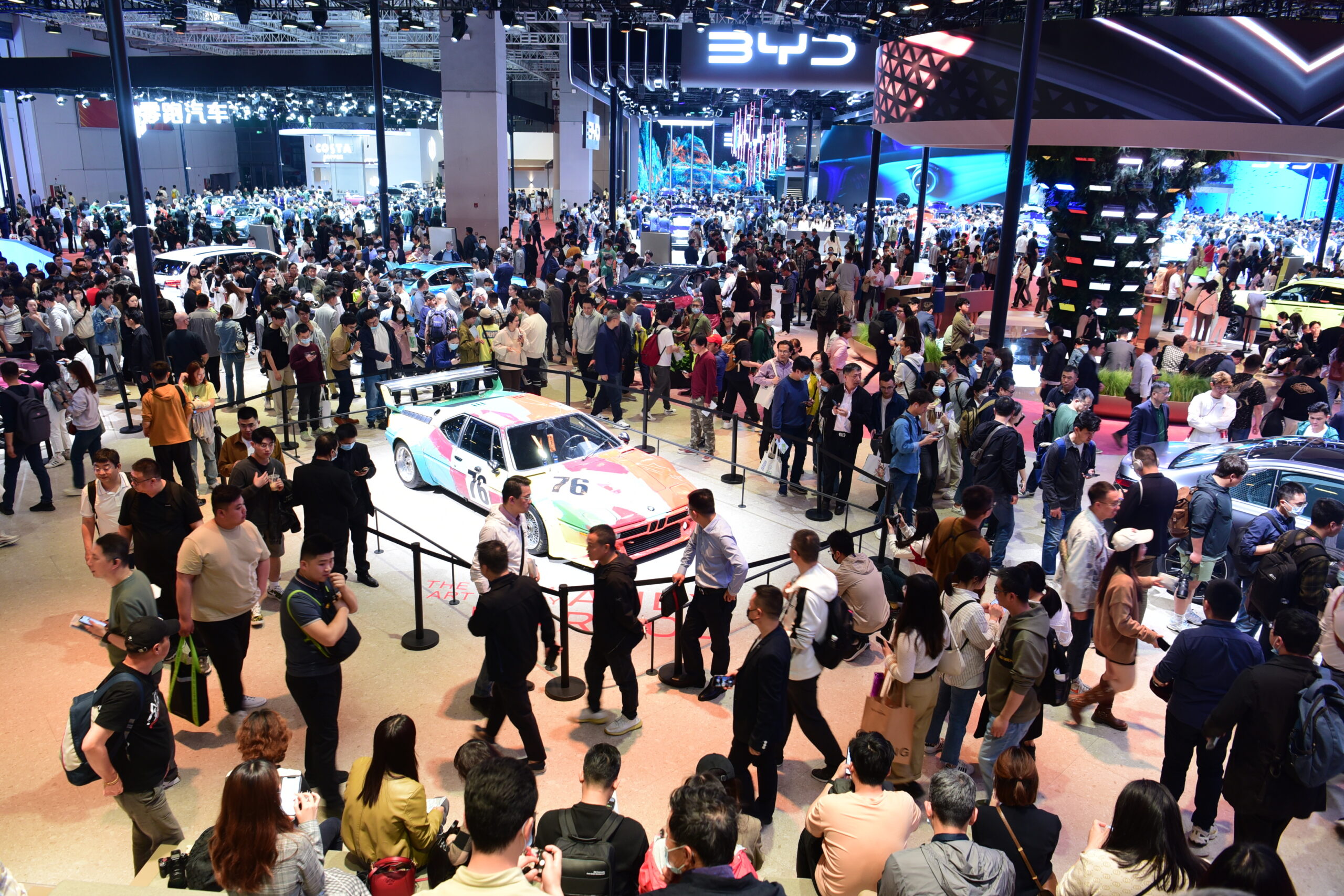
Auto Shanghai, China’s biggest car convention, kicked off last week and is in full swing until this Thursday, April 27. Journalists, consumers, and auto CEOs and employees have descended on Shanghai’s colossal National Exhibition and Convention Center, with some predicting more than a million total visitors over the course of the event.
Auto, battery, and component companies are revealing new models, announcing shifts in strategy, and unveiling new partnerships at the show, the 20th installment of the biennial event. The last Auto Shanghai was held in 2021 under COVID-19 restrictions, with fewer visitors and international executives able to attend. This year’s show, taking place as Chinese auto companies are waging a price war, gives industry insiders their first chance in several years to enjoy the convention to the fullest.
Here are our top takeaways from the first week of the show.
China news, weekly.
Sign up for The China Project’s weekly newsletter, our free roundup of the most important China stories.
1. The future is electric in China — and foreign firms are behind
This is the biggest takeaway from the week: Electric vehicles (EVs) attracted throngs of visitors, while the internal combustion engine cars on display at the show struggled to attract attention.
Around one in four cars sold in China last year were electric, and the atmosphere at Auto Shanghai reflected this ongoing shift. At one event, Volkswagen predicted that by 2025 half of all cars sold in China would be electric.
The trend puts most foreign firms, apart from Tesla, on the back foot. Home grown Chinese companies like BYD, Geely, GAC Aion, and Li Auto are selling lots of EVs, while foreign firms, often operating in joint ventures with local partners, are generally struggling. (Aside from Tesla, the one exception is the Wuling Hongguang Mini EV, manufactured by SAIC-GM-Wuling, of which General Motors owns 15%.)
“Chinese brands have leapt ahead of foreign brands in design, quality, innovation and technology in the NEV race,” wrote co-host of the China EVs and More podcast Lei Xing. “I wouldn’t have said this four years ago when I previously attended Auto Shanghai.”
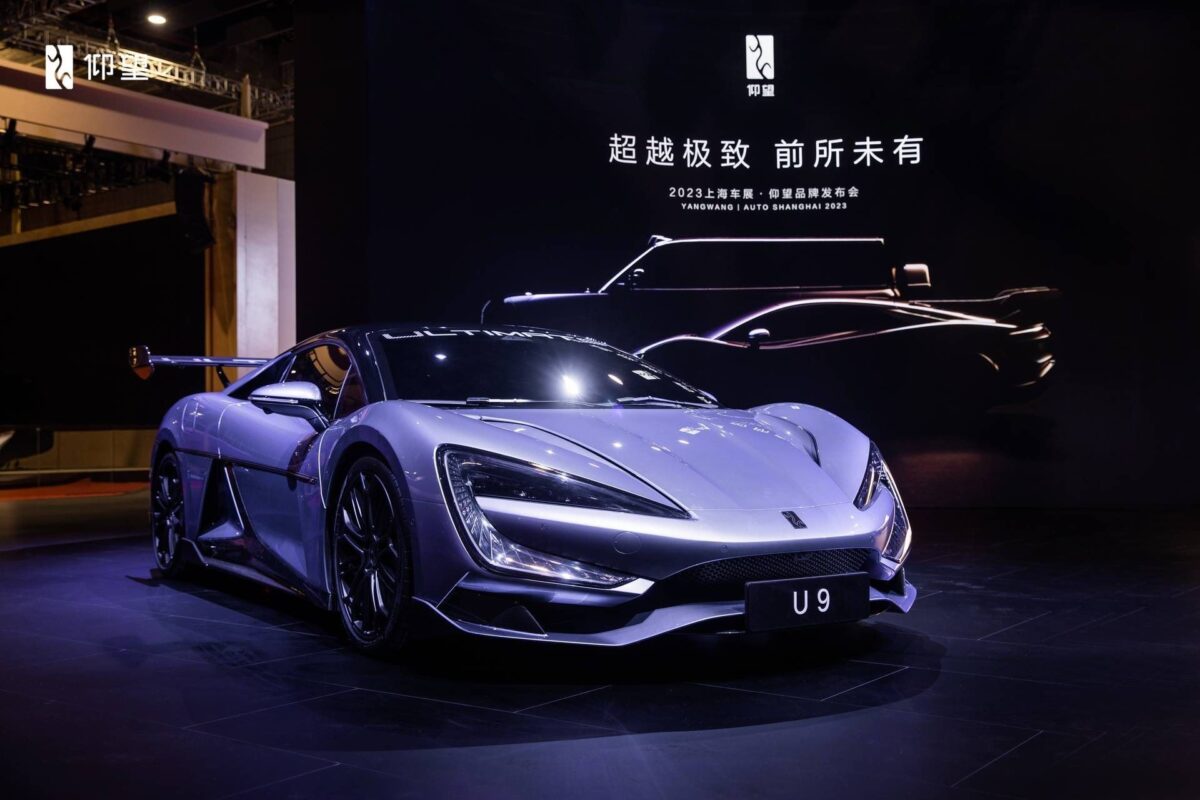
2. Luxury car reveals
BYD showed off its new U9 supercar under its luxury Yangwang brand, an answer to the electric Hyper GT sports car model that GAC Aion unveiled last September. The U9 is expected to start at over 1 million yuan (around $145,000), more than three times the expected price of Aion’s GT, which is set to go for about 300,000 yuan ($43,514).
BYD also revealed the Yangwang U8, a luxury SUV that is on advance sale now, starting just shy of 1.1 million yuan (around $159,500).
Geely-owned brand Polestar launched the Polestar 4, another luxury SUV that trades a rear windshield for hi-res cameras and sensors, which ships in several versions starting from 349,800 yuan (around $50,800).
Hozon’s EV brand Neta also kicked off sales of the Neta GT, a flashy electric sports car it unveiled earlier this month. Hozon’s car undercuts GAC Aion and Yangwang’s sports cars on price, starting at 178,800 yuan ($25,934).
Foreign luxury firms also showed off new models, including EVs. BMW (despite alienating some Chinese visitors over an ice cream scandal) showed off two new EV models. Mercedes for the first time displayed an electric model from its famed Maybach line of vehicles, and Maserati’s vehicles included a new electric SUV.
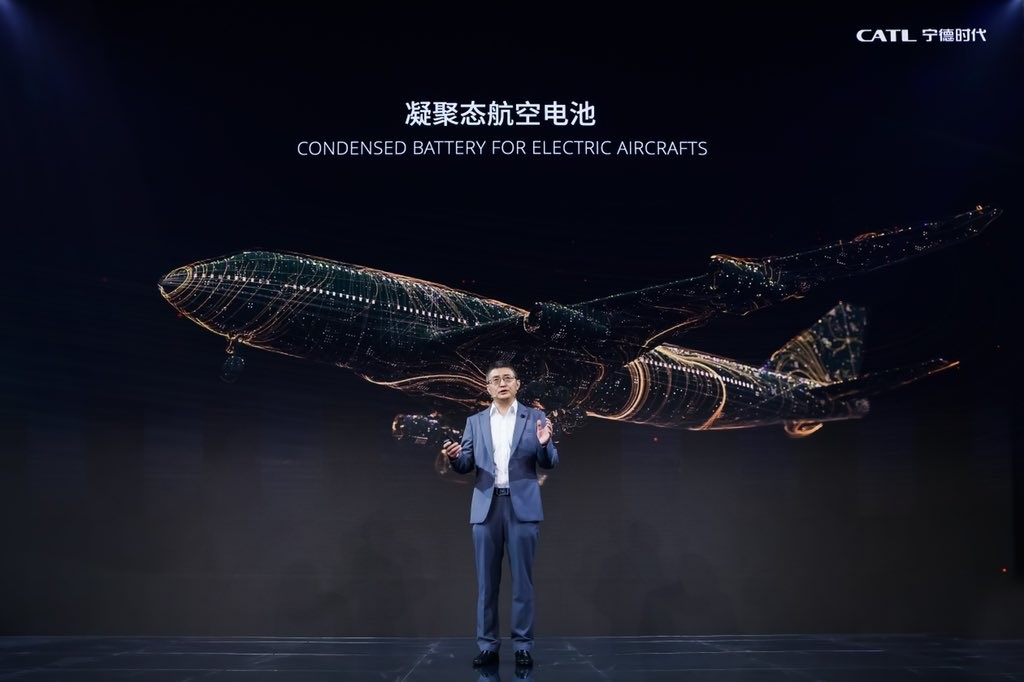
3. CATL reveals condensed battery and sodium-ion battery partnership with Chery
The world’s top EV battery maker, CATL, made several new announcements at the show. The company’s top scientist Wú Kǎi 吴凯 announced a new battery, the “Condensed Battery,” with an energy density of 500 watt-hours per kilogram (Wh/Kg), nearly twice as efficient as CATL’s advanced Qilin battery, which has an energy density of around 255 Wh/Kg.
While the Condensed Battery is still in the prototype phase, its efficiency represents a jump in technology. “Of course, we don’t know if it will be commercial… but this is a density at which you’re approaching the ability to power a small aircraft,” said Cory Combs, an Associate Director at the research group Trivium China.
CATL also announced it will partner with car maker Chery across a variety of fronts, and said it would provide Chery with sodium-ion batteries, marking the first time such batteries are used in commercial EVs.
“The biggest thing to me is that they actually partnered with someone to use the battery,” said Combs. “Everyone produces new stuff, but it’s actually having a production line that uses it that lets you test it… The reality is you cannot tell until it’s out in the market being tested with dollars and cents.”
CATL first announced it was developing sodium-ion batteries in 2021 as part of an effort to diversify away from expensive lithium.
“Anything that’s non-lithium could really be a game changer,” Jennifer Turner, Director of the Wilson Center’s China Environment Forum, told The China Project, emphasizing that new efforts toward developing sodium batteries would make for big changes in battery supply chains.
While China mostly relies on lithium imports from countries like Australia and Chile, it is dominant in refining, with some 60% of the world’s capacity to process battery-grade lithium. Sodium is much more abundant than lithium, so breakthroughs in sodium-ion tech would allow other countries to reduce reliance on China. “That could be a win for even non-Chinese companies that would not have to depend on the Chinese-controlled lithium markets anymore,” said Turner.
Still, lithium isn’t likely to be going anywhere soon; BYD just announced plans to invest $290 million in a new plant in Chile to build battery components using lithium mined in Latin America.
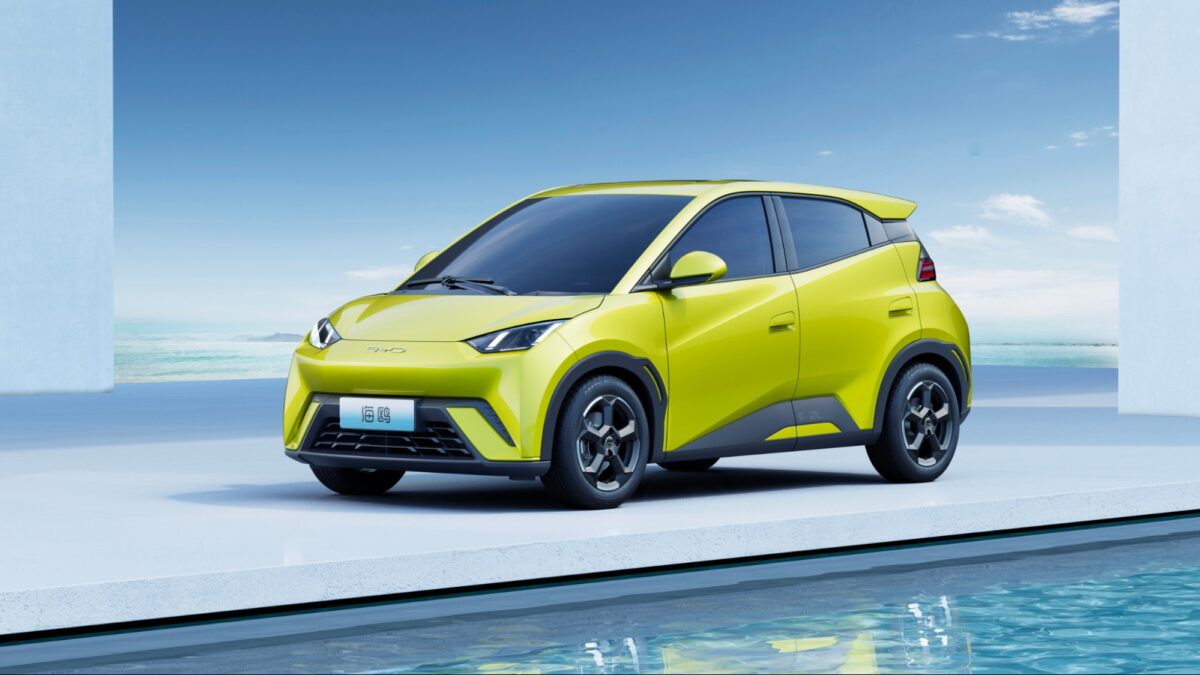
4. Chinese firms show off new EVs
China’s EV firms displayed new models at the show, with BYD’s Seagull model attracting widespread attention. The Seagull is an unassuming sedan, but it has an impressively low starting price of 78,800 yuan (around $11,400). BYD received over 10,000 preorders for the vehicle shortly after sales opened during the auto show. One industry insider predicted the Seagull would quickly become the best-selling car in China after hitting the market, telling Reuters that it “redefines the whole market in terms of a price value proposition.”
The three Chinese startups competing with Tesla for China’s premium EV market, NIO, XPeng and Li Auto, collectively known as Wei Xiao Li, all made announcements on new models at the show.
Li Auto, which has up until now focused on what it calls extended range EVs (EREVs) which are hybrids that partly rely on combustion, announced it will expand its offerings of new pure EV models. Its EVs will notably use CATL’s advanced new Qilin batteries, which will give the cars a 400 kilometer (about 250 miles) range on just 10 minutes of charge. NIO showed off an updated version of its ET7 sedan, as well as a revamped ES6 SUV, one of its more popular models in 2022. XPeng launched its new G6 model, a crossover expected to compete against Tesla’s Model Y, with prices beginning at 200,000 yuan (around $29,000).
5. Foreign companies double down on EVs
Non-Chinese firms are trying to play some catch-up when it comes to the EV market in China, and several of them signaled their intent to do so at the auto show.
In addition to the luxury EV vehicles mentioned above, Toyota kicked off sales of its first EV model in China this week, and revealed two new EV models. Volkswagen announced a $1 billion investment in a new company in Hefei that will help supercharge the brand’s EV offerings, and said it aims to have 10 more EV models available in China by 2026. Similarly, Honda unveiled three new EVs and said it would offer only EVs in China by 2035. Hyundai, Kia Buick, and Ford likewise showed off new EV models at the show.
But for most foreign firms, there is a long way to go before they will be able to rival the sales numbers of domestic companies.
“I think they need to refocus on South and Southeast Asia, and build affordable electric vehicle cars that will be appealing to those markets,” said the Wilson Center’s Turner, explaining that pollution in cities in those regions may drive demand for EVs.
When it comes to expanding in China, however, foreign firms may have a partner in the Chinese government, Combs told The China Project, explaining that Beijing could see the companies as a way to boost domestic consumption, a key policy goal. “Beijing is really looking at NEVs specifically as a portion of that consumption story,” he said. “And both domestic and foreign brands are part of that.”
6. Chinese EV firms look to Europe
A number of Chinese EV firms announced their intentions to expand operations in Europe. Zeekr, a premium brand under the Geely umbrella, announced it would expand to Europe this year, with a new headquarters in Amsterdam (Zeekr has also signaled plans to have an IPO in the U.S. this year). NIO and BYD, which launched operations in Norway in 2021, also announced plans to provide new offerings to consumers on the continent, as did XPeng and the lesser known EV brand HiPhi.
Europe presents a major opportunity for Chinese EV firms. It’s the world’s second-largest market for EV sales after China, and is more open to Chinese auto imports than the U.S. A push toward Europe will give China a shot at becoming the world’s largest exporter of cars; currently it lags just behind Japan.
But there are significant challenges, such as Europeans’ loyalty to European brands. Chinese EVs and the batteries they run on will also have to contend with new European standards, which have requirements related to the carbon footprint associated with producing batteries.
“That’s going to be something that’s going to be a little bit more difficult, maybe very difficult for Chinese EV companies, because they don’t necessarily have the standards and the methodology for this kind of tracking of their batteries,” said Turner.
Some smaller companies in China’s EV space are looking directly to niche foreign markets, opting not to sell to Chinese consumers where competition is so fierce. “They’re specializing in very niche foreign markets and they’re very high margin,” said Combs. “It starts as something small, has a niche, and then eventually it has enough profit margins to start building out elsewhere. And so, you can lose big markets and still have a viable pathway to growth.”
7. BYD, Wei Xiao Li stocks jumpy
BYD, Li Auto, NIO, and XPeng shares all jumped last Monday as the start of the show and associated buzz gave the stocks a boost, only to slump later in the week. The fall in share prices may have had to do with a natural course correction after the hype of the auto show wore off, but was also likely related to new price cuts announced by Tesla on Wednesday.
Tesla has been at the forefront of an ongoing price war in China. While Li Auto and XPeng have joined in reducing prices of some of their offerings, NIO reiterated at the Shanghai show that it would not cut prices (although it refrained from pricing its new ES6 model, giving itself some flexibility in maneuvering the current cutthroat environment).
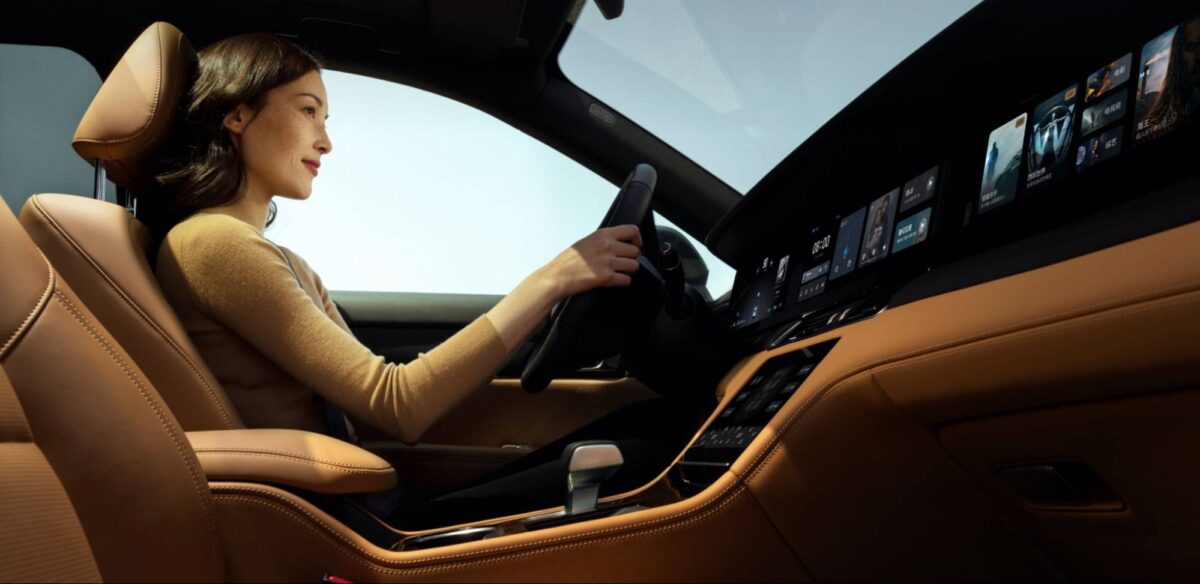
8. Firms tout autonomous systems
Established autonomous driving platform developer Baidu Apollo said it would work with automakers to develop autonomous driving, and released new software offerings to upgrade capabilities of cars to navigate urban environments. XPeng, a leader in autonomous driving when it comes to EV makers, said its XNGP autonomous system would be ready for a full “start to park” autonomous drive by the end of 2024. Li Auto also announced it was developing autonomous driving software, and is targeting rollout of the systems to 100 cities by the end of 2023. Huawei presented an upgrade to its self-driving system, the ADS 2.0, which will feature in cars made by Seres.
Other companies that produce software and hardware in the autonomous driving space, including Horizon Robotics, WeRide, and Hypeview, are also at the event.
BYD had a different take from some of its competitors when it came to autonomy. A BYD spokesperson told reporters that the firm believes full autonomy in driving to be “basically impossible,” and that efforts to improve autonomy in the manufacturing process would be a better investment.
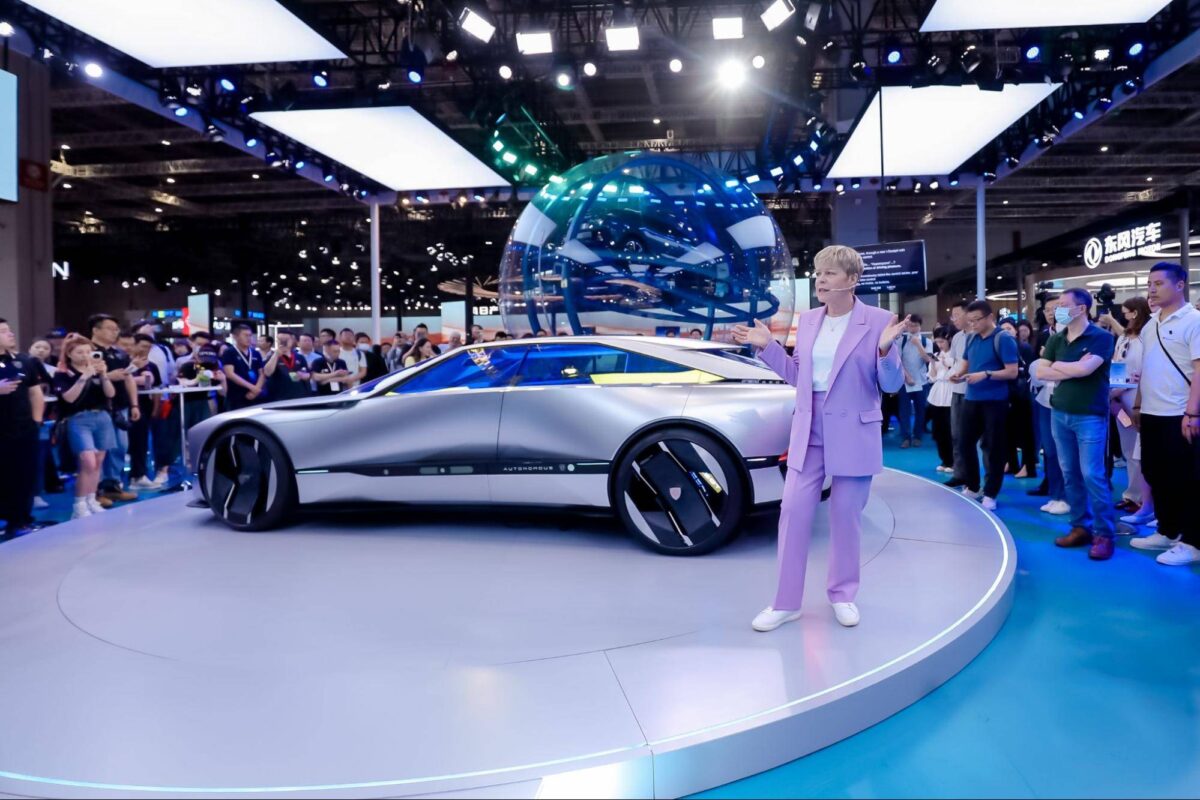
9. Concept cars wow visitors
A number of eye-catching concept cars that looked straight out of a sci-fi film set were shown at the event. Among the most futuristic is the Nissan Maxx-out, an EV convertible. Nissan also showed off an SUV concept, the Arizon, which has a boxy look and features an all-glass ceiling.
European automakers also displayed concept cars, like BMW’s fully electric i-Vision Dee, Porsche’s Vision 357 with a retro aesthetic, and Peugeot’s Inception, which features a futuristic interior and rectangular steering wheel.
10. Notable absentees
Tesla was the most conspicuous absence at Auto Shanghai. China is a major market for Tesla, where it last year ranked third in EVs insured, behind only BYD and the SAIC-GM-Wuling joint-venture, according to numbers from the Ministry of Public Security. Tesla has not said why it skipped the Shanghai show. At the 2021 Auto Shanghai, a protester jumped on a Tesla Model 3 to protest a brake failure she had experienced while driving a Tesla, causing a major public relations headache for the company.
The Baidu- and Geely-backed EV start-up Jidu, which has yet to put any of its vehicles on the market, also skipped the show, telling Shanghai-based business media platform Yicai that the event did not line up with the company’s marketing plans. Electronics heavyweight Xiaomi, which plans to start mass production of cars in 2024, also opted out of the show, though founder Léi Jūn 雷军 and other Xiaomi executives were spotted visiting the booths of various automakers.
A number of once-promising EV start-ups, including WM Motor, Evergrande New Energy Auto, Qiantu, and Aiways, also skipped the show. These smaller, lesser known start-ups have struggled to find a foothold in the crowded Chinese EV market, and their absence fueled speculation of their possible demise.
Companies:
- BYD Auto
- Geely
- GAC Group
- Yangwang 仰望
- Polestar 极星
- Hozon Auto 合众新能源汽车
- Li Auto
- CATL
- XPeng
- Zeekr 极氪智能科技
- HiPhi 高合
- Huawei
- Seres 赛力斯汽车
- Horizon Robotics
- WeRide
- Hyperview 宏景智驾
- SAIC
- Baidu
- Jidu
- Xiaomi
- WM Motor 威马汽车
- Evergrande New Energy Auto 恒大新能源汽车
- Qiantu 前途汽车
- Aiways 爱驰汽车
Sources and additional data:
- What If Your Tesla Could Run on Sodium? / Wall Street Journal
- CATL unveils Condensed Battery for electric aircrafts and EVs / CNEV Post
- China To Show Off Its EV Clout At First Auto Show Since End Of “Zero-Covid” / Forbes
- Challenging China’s dominance in the lithium market / C&EN
- BYD Seagull EV Priced From $11,400, Gets 10,000 Orders On First Day / Inside EVs
- Once-dominant foreign auto brands pledge comeback in China / Reuters
- Tesla Rivals In China Unveil These New Electric Vehicles At Auto Shanghai / Investor’s Business Daily
- 仰望U9多少钱?比亚迪仰望U9价格及上市时间 / 无敌电动网
- Neta GT sports car officially launched, priced from $26,000 / CNEV Post
- Auto Shanghai: the future is all electric, self-steering and intelligent in the world’s largest EV market / SCMP
- Auto Shanghai highlights intense electric car competition in China / Autoblog
- Polestar 4 launched in China with starting price of $50,870 / CNEV Post
- BYD Adds More EVs at Auto Shanghai. It Isn’t Alone. / Barron’s
- Hyundai Motor, Kia aim to expand in China through Auto Shanghai / Korea Economic Daily
- Chinese luxury EV brand Zeekr will expand to Europe by end of 2023 / TechCrunch
- Chinese EV makers should brace for protectionist policies, Nio CEO says / Automotive News Europe
- Auto Shanghai crowds flock to BYD’s Seagull / Reuters
- Tesla falls after issuing a fresh round of price cuts ahead of reporting earnings results / Business Insider
- Nio says it won’t join the ‘price war’ and slash prices like Tesla / CNBC
- Chinese EV giant BYD says self-driving tech is more valuable for factories than cars / CNBC
- 别只盯着宝马冰激淋,自动驾驶要变天了 / 36Kr
- Baidu Unveils New Apollo Cabin Map Product Matrix, Unlocks Multiple Tech to Aid Development of Intelligent Cars / AAStocks
- Li Auto Inc. Unveils Autonomous Driving and BEV Roadmap / Seeking Alpha
- Chinese EV maker Xpeng debuts most advanced semi-autonomous driving system to rival Tesla / CNBC
- 聚焦2023上海车展:概念先行!多款概念车亮相上海车展! / 汽车王平
- Baidu-Backed Jidu Auto Skips Auto Shanghai Due to Product Marketing Plans, Source Says / Yicai
- Auto Shanghai: China’s underachieving EV start-ups skip premier event as they fade into oblivion / SCMP
- Xiaomi Founder Lei Jun Visits EV Makers’ Booths at Auto Shanghai 2023 / Pandaily



